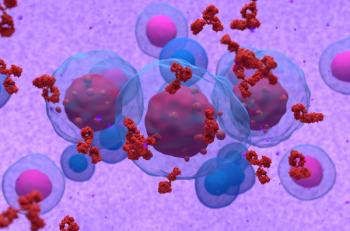
New Drugs Health-System Pharmacists Should Know
Here are new drugs for 2015 pharmacists can expect to handle.
In an acclaimed session at the American Society of Health-System Pharmacists’ 2015 Summer Meetings and Exposition in Denver, Tom Frank, PharmD, BCPS, of the Department of Pharmacy Practice at the University of Arkansas for Medical Sciences, walked health-system pharmacists through the new drugs for 2015 they can expect to handle.
Dr. Frank provided attendees with a detailed list of 22 new medications, describing the indications, pharmacology, adverse effects, dosing, and associated costs for each.
He spent a large portion of the session on new drugs targeting certain conditions, namely hepatitis C virus (HCV), diabetes, skin infections, and atrial fibrillation.
Hepatitis C
- Sofosbuvir (Sovaldi) by Gilead
- Ledipsavir and sofosbuvir (Harvoni) by Gilead
- Ombitsavir, paritaprevir co-dosed with ritonavir, and dasabuvir (Viekira PAK) by AbbVie
All 3 of these HCV drugs are characterized by shorter treatment durations and improved efficacy and safety profiles. However, Dr. Frank said, the
Diabetes
- Empagliflozin (Jardiance) by Boehringer Ingelheim and Lilly
- Albiglutide (Tanzeum) by GlaxoSmithKline
- Dulaglutide (Trulicity) by Lilly
- Insulin inhalation powder (Afrezza) by Sanofi and MannKind
The standout in this new class of diabetes drugs is Afrezza, the first and only FDA-approved insulin for administration by inhalation. Although it was approved to treat both type 1 and type 2 diabetes, type 1 diabetics must use it in conjunction with long-acting insulin.
Skin infections
- Dalbavancin (Dalvance) by Durata
- Tedizolid (Sivextro) by Cubist
- Oritavancin (Orbactiv) by The Medicines Company
“The [health care] landscape has a lot of activity in terms of anti-infectives, specifically antibacterials—primarily for skin and skin-structure infections,” Dr. Frank told attendees.
Anticoagulation
- Edoxaban (Savaysa) by Daiichi Sankyo
Dr. Frank
“If you have somebody on a once- or twice-a-day dose [of edoxaban] that runs out of the prescription on Saturday and won’t refill until Monday…an atrial fibrillation patient may very well may have a stroke on Sunday,” he said.
Allergy
- Timothy grass pollen allergy extract (Grastek) by Merck
- Short ragweed pollen allergen extract (Ragwitek) by Merck and Catalent
- Sweet vernal, orchard, perennial rye, timothy, and Kentucky blue grass mixed pollens allergy extract (Oralair) by Stallergenes
Grastek and Ragwitek both have “interesting dosing instructions,” Dr. Frank said. According to his presentation notes, those instructions are: “Place tablet under tongue, allow to remain until completely dissolved, do not swallow for at least a minute.”
“Have you ever tried to not swallow? All you can think about is swallowing,” Dr. Frank joked.
Obesity
- Naltrexone and bupropion (Contrave) by Orexigen and Takeda
Contrave’s active ingredients, naltrexone and bupropion, are an opioid antagonist and antidepressant, respectively. As a result, Dr. Frank explained, patients taking chronic opioid therapy should not take Contrave, and patients receiving acute opioid treatment may not achieve that regimen’s full benefits if they also take Contrave.
Insomnia
- Suvorexant (Belsomra) by Merck
Belsomra is the first and only drug in its class approved to treat insomnia. The pharmacology behind the efficacy of Belsomra is that it “blocks the binding of wake-promoting neuropeptides orexin A and orexin B, which suppress the wake drive,” according to Dr. Frank’s presentation.
He also noted that orexin A and orexin B levels “have been associated with happiness in human subjects,” which he says may contribute to the fact that one of the Belsomra’s notable adverse effects is suicidal ideation.
Other drugs included on Dr. Frank’s list were:
Chronic obstructive pulmonary disease
- Olodaterol (Striverdi Respimat) by Boehringer Ingelheim
Opioid-induced constipation
- Naloxegol (Movantik) by AstraZeneca
Toenail fungus
- Efinaconazole (Jublia) by Valeant
- Tavaborole (Kerydin) by Anacor
Urinary tract infection
- Ceftolozane and tazobactam (Zerbaxa) by Cubist
Myocardial infarction
- Vorapaxar (Zontivity) by Merck
In an interview with Pharmacy Times, Dr. Frank
“There are 2 monoclonal antibodies that are just around the corner that are going to be used to reduce [low-density lipoprotein] cholesterol…beyond what we’ve been able to do,” he said.
Dr. Frank also mentioned
“I expect, by this time next year, we will probably be talking about these [drugs] in terms of, ‘These are really impressive additions,’” he concluded.
Newsletter
Stay informed on drug updates, treatment guidelines, and pharmacy practice trends—subscribe to Pharmacy Times for weekly clinical insights.
















































































































































































































